Toucans and hornbills both count among the most beautiful birds – and they look so alike with their large beak they are easily confused. How to tell them apart?
00:28
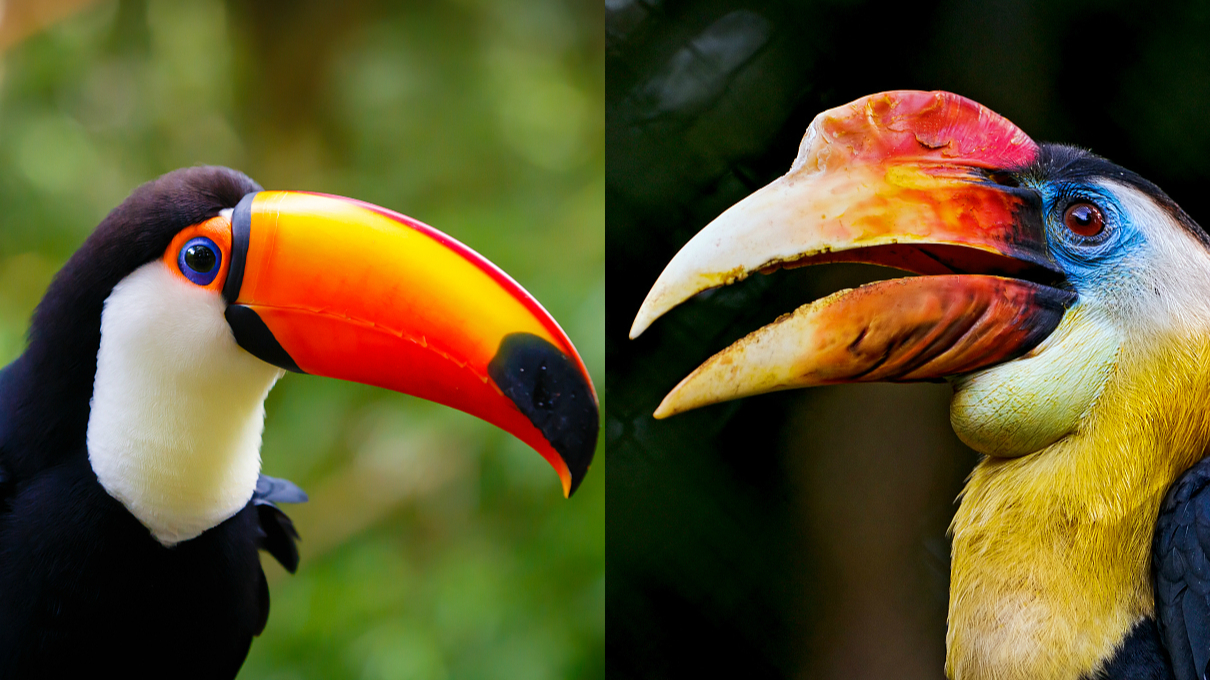
Just take a closer look at the bird's beak. If you see a ridged structure, it is a hornbill. The particular structure is called a casque; it is hollow and light, but still needs some extra support from the neck bones. The shapes of the casques of different hornbill species vary. Some hornbills' casques are merely a small ridge; some have quite big and protruding casques with bright colors. The function of the particular structure is not clear yet; it is generally believed that the casque acts as an amplifier and resonator when the hornbills call each other.
If the bird's beak is quite large but without the casque, it is probably a toucan. However, some hornbill species do not have the casque either. Comparatively, the toucan has a more prominent beak than the hornbill. Some species have beaks that are longer than half the bird's body.
Slide to see difference:
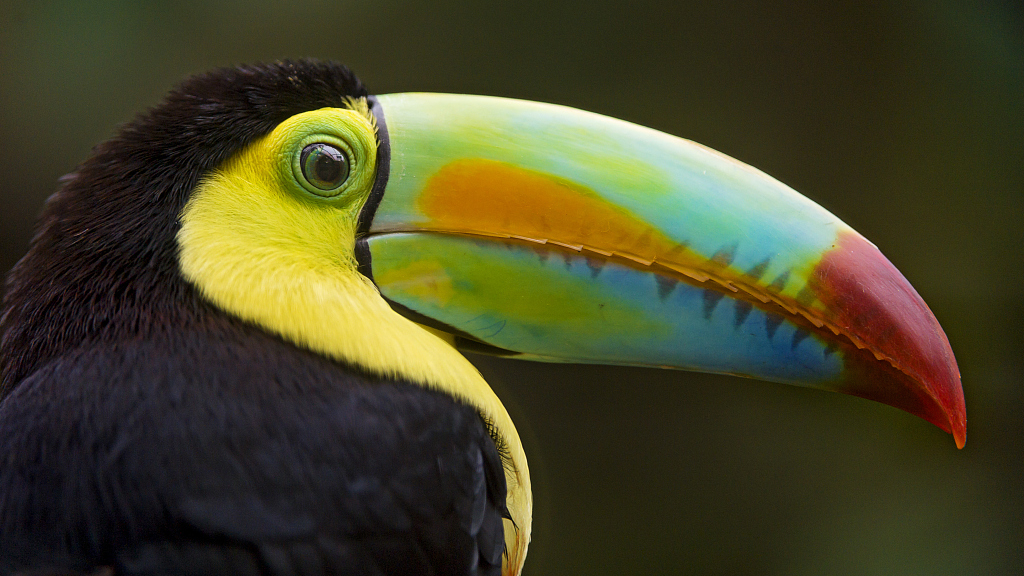
No casque – toucan. /VCG Photo
No casque – toucan. /VCG Photo
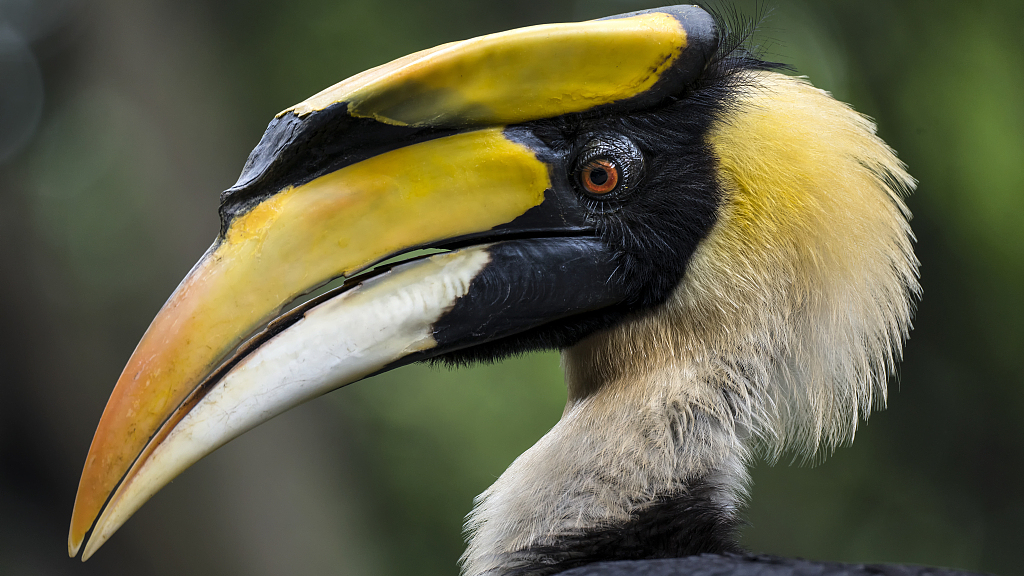
With casque – hornbill. /VCG Photo
With casque – hornbill. /VCG Photo
Interestingly, the toucan has a long tongue to match its large beak, whereas the hornbill's tongue is pretty short. Therefore, the toucan just sits on the tree and can reach all the fruits within the beak's reach; the hornbill has to toss the food into the air and have it drop into its throat because the short tongue cannot help fetch food from the bill tip.

The toco toucan. /VCG Photo
The toco toucan. /VCG Photo
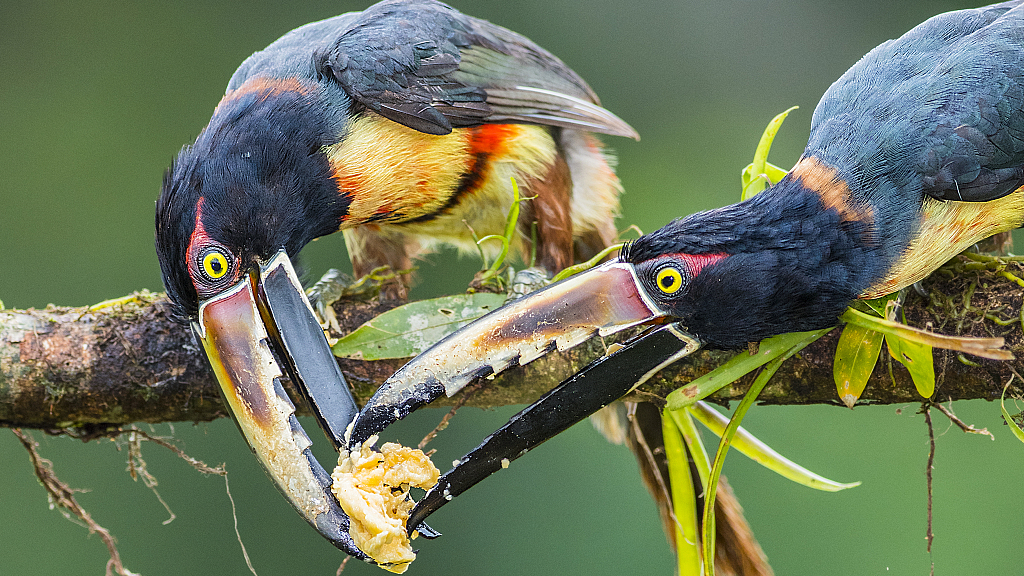
Toucans do not have to toss up the food when eating. /VCG Photo
Toucans do not have to toss up the food when eating. /VCG Photo
Another clue to help you differentiate the two species is where you see the specimen. The toucan is a family of over 40 species, all of which are only found in Central and South America. The 55 hornbill species live in Asia and Africa. The king's adviser, Zazu, in the famous animation movie "The Lion King," is a red-billed hornbill. In the 2019 version, you can see Zazu has a very small, unobvious casque on his beak.
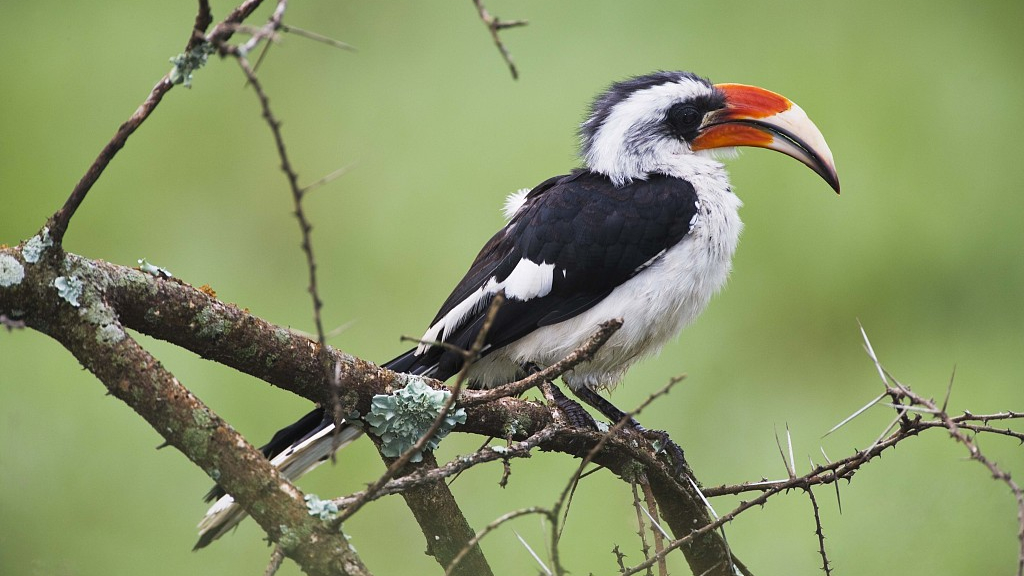
Real-life Zazu from "Lion King." /VCG Photo
Real-life Zazu from "Lion King." /VCG Photo
The magnificent, colorful beaks of toucans and hornbills might make you think they're related. However, the two birds are not so closely related in taxology. The beaks of toucans and hornbills are an example of what scientists call "convergent evolution." Hornbills and toucans share similar diets and have adapted to their different environments in the same way, developing similar traits. That makes them appear related.
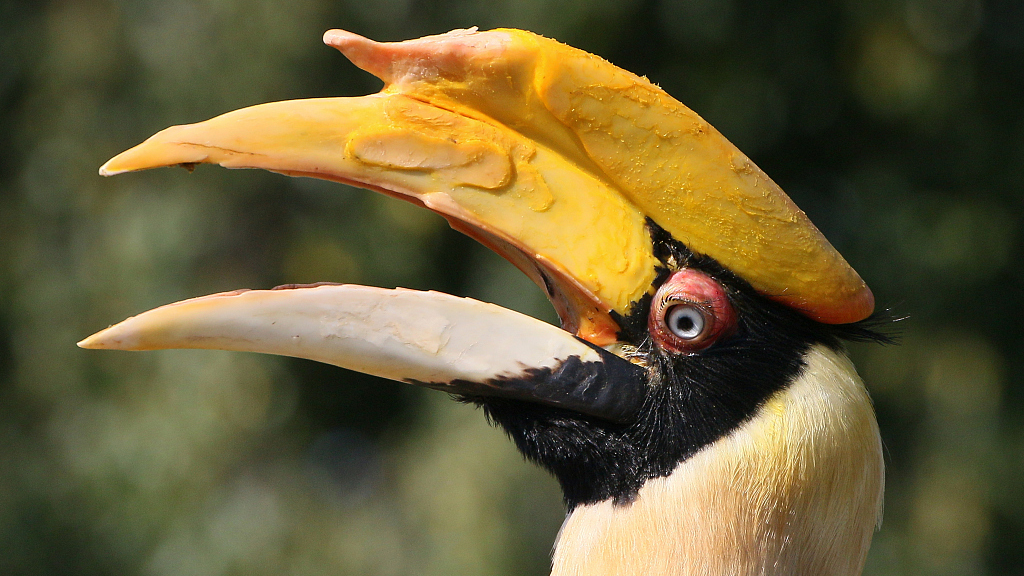
The casques of hornbills vary in different species. Many species have naked, colorful skin on the face. /VCG Photo
The casques of hornbills vary in different species. Many species have naked, colorful skin on the face. /VCG Photo
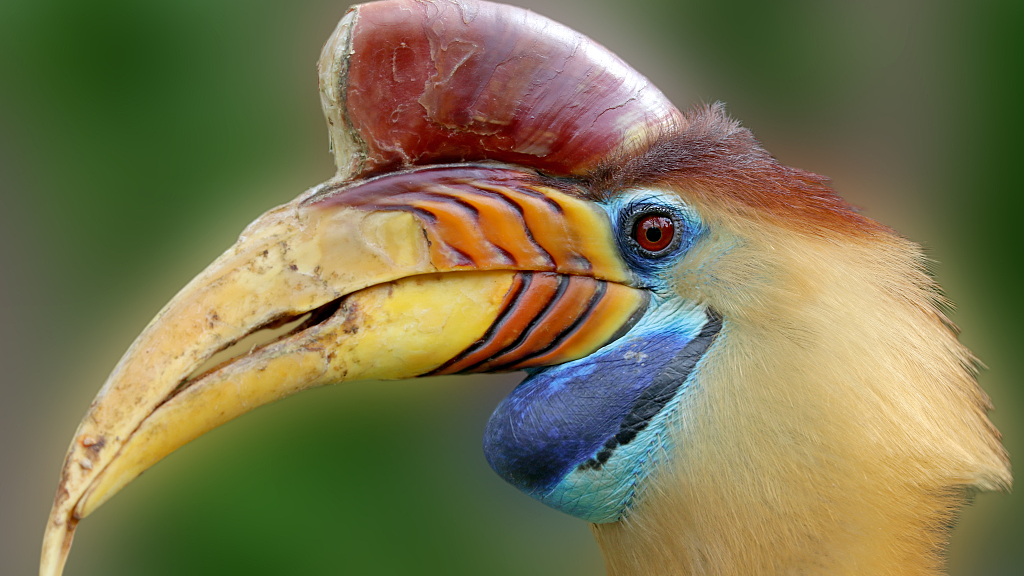
The casques of hornbills vary in different species. Many species have naked, colorful skin on the face. /VCG Photo
The casques of hornbills vary in different species. Many species have naked, colorful skin on the face. /VCG Photo
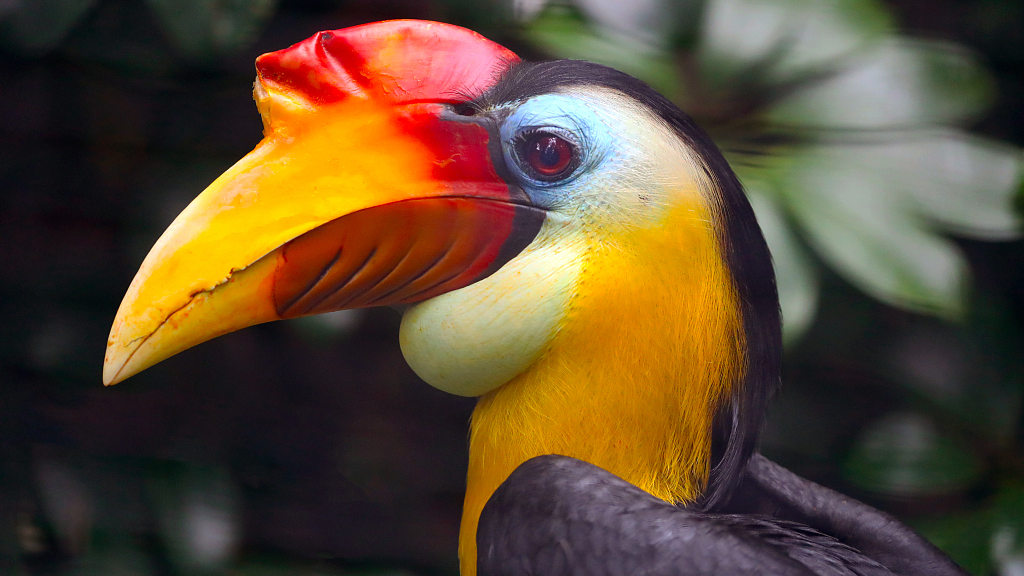
The casques of hornbills vary in different species. Many species have naked, colorful skin on the face. /VCG Photo
The casques of hornbills vary in different species. Many species have naked, colorful skin on the face. /VCG Photo
(Cover image via VCG)
(If you want to contribute and have specific expertise, please contact us at nature@cgtn.com.)